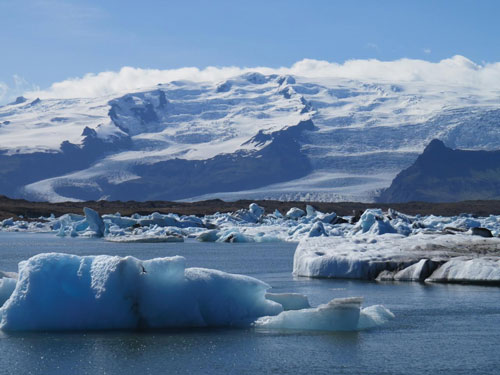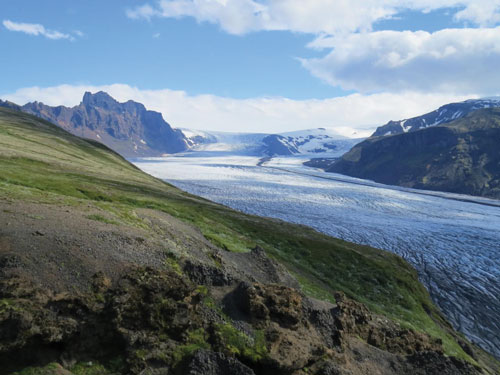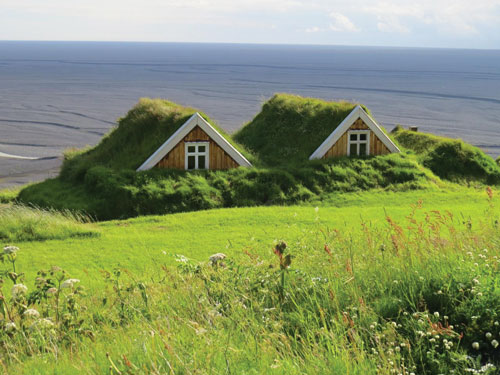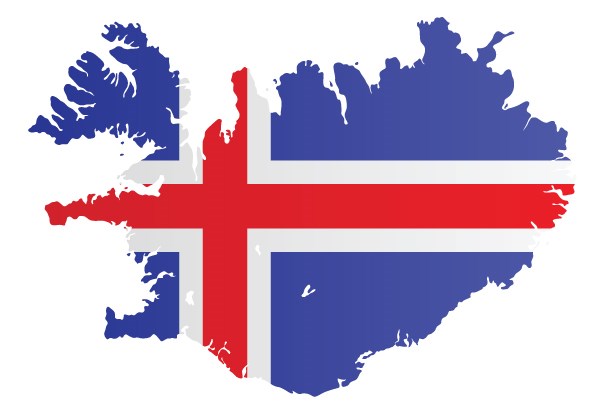Hilmar Kjartansson, MD, FACEM, a native of Grindavik, Iceland (a small fishing town near Reykjavik), works as the clinical director of emergency medicine at the National University Hospital of Iceland, located in Reykjavik. It is the largest emergency department (ED) in Iceland, seeing approximately 80,000 patients a year. Dr. Kjartansson has spent time in New Zealand and Australia as both a trainee and then a consultant before moving back to Iceland to work in his current position.

Photos by Dr. David Graber, UC Davis Medical Center

- How did you find medicine as a career?
I found medicine as a career almost by chance. My mother stayed at home, having her hands full with 6 children, and my father was a captain on a fishing boat. I starting working early on in the fishing industry, and prior to starting university education I had worked as a fisherman on both trawlers and smaller boats. I initially signed up for chemistry at the University but after [thinking about it during the] summer I decided to change to medicine. Anyone could start the first semester but at the end of the semester only a fifth of the students [were allowed to] continue, depending on performance. - How did you decide to pursue emergency medicine?
After graduation I did my internship and decided to have a career in internal medicine and entered the training program at the University Hospital. After finishing that program, I decided that being on call in the front line suited me much better so I changed my plans and decided to train in emergency medicine. I applied for a job in Christchurch, New Zealand, and finished my training to become a Fellow of the Australasian College for Emergency Medicine. In total I spent 7 years in New Zealand before relocating back to Iceland. - What prompted your current career path?
It had always been on the itinerary to move back to Iceland. I hold dual qualifications as a consultant in both internal and emergency medicine here in Iceland. I moved back with my family in 2011, and since 2013 I have been the clinical director of the emergency department. I enjoy the challenges of working on the floor, seeing patients, and directing the shift, but the opportunity of having more significant impact on how the department evolves and improves was very appealing to me, and therefore I applied for the position and have now for 18 months been leading the department, assisted by a fantastic group of consultants, in what I believe is a positive change. - What does your daily work entail? (ie, teaching, community medicine, a combination?)
My daily work schedule is very variable. Half of the time I work on the floor, running the shift [attending to ED clinical work]. The other half of the time is spent on administration work, quality improvement projects, and teaching (both formal and informal). - Can you briefly describe your ED and its structure?
The ED is divided into 2 major areas. The main hub has just over 30,000 presentations annually, [and rates of presentations have been] rising by 5% per year. The hospital has about a 25% admission rate with a good variety of medical, surgical, trauma, etc. There's a small pediatric ED [located at a different site] so most pediatric medical emergencies will go there, but all pediatric traumas, minor and major come to our ED. With Iceland becoming a [tourist] hotspot we have seen the summer becoming busier [with an increased number of traumas].On the second floor there's a fast track that deals with a variety of minor trauma, orthopedics, infections etc. [The fast track sees] a little less than 50,000 presentations annually with a very low admission rate but [has the opportunity for] a lot of minor interventions for orthopedic injuries. - How is medical and emergency training structured in Iceland?
The full census of the population in Iceland is only 320,000 people. There's one medical school with 48 graduates per year. Most [medical school graduates] will do their house surgeon year and a couple of years of basic training [before going] abroad to finish their advanced training. Most [trainees] come back after completing their training so we have a good mix of consultants who have done their training in a wide variety of places; ie the U.S., UK, Scandinavia, Holland, and New Zealand. Since we do not have advanced trainees, the ED has quite strict supervision of their juniors. I'm sure it doesn't sound appealing to attending physicians [who have to primarily] do the night shifts but it is a necessity in our system as the junior doctors do not have the experience to take on that responsibility [independently].Additionally, we have a 2-year training program for the junior doctors to prepare them for further training abroad. The program director [for this specific program] did his emergency [medicine] training in the U.S. We have around 20 consultants here working. [Outside consultants also] come from a mixed background, most are now ED trained in U.S., New Zealand, Sweden, and Norway, but the others are primary care consultants, pediatricians, surgeons, and internal medicine consultants. Some of the consultants also work shifts on the HEMS [Helicopter Emergency Medical Service] that is also involved in search and rescue operations on the highlands and on the ocean. - Do you have out-of-hospital work that complements your work in EM?
I have been involved in a biotechnical startup company called Kerecis here in Iceland. It focuses initially on wound care products made out of fish skin, in particular [for] use on chronic wounds. It is not quite complementary to emergency medicine, but I enjoy it very much. The product is already on the market and we are also developing other products used for tissue reconstruction and treatment of acute wounds and burns, which will be more complementary to the field of emergency medicine. - What advice do you have for residents interested in working internationally?
I think it is of tremendous value to work in different systems and places. There are new challenges to be met and you get taught different ways of doing things. It's not only the medicine that enriches you, it's also soaking in a different culture, a different way of doing things in general, and together those things help you to develop and advance both as a physician and a human being. - What has been the most challenging lesson learned on your journey?
I find that initially the whole adrenaline rush of severe traumas or emergencies is very important for us as trainees [but this need changes as we progress through our careers]; Initially, we need to get exposure to those dramatic events and learn to manage them well. As time goes on, one starts to take more joy from the little things, [like] interactions with patients and co-workers. As a junior doctor I think we all worry a lot about the patients that we've sent home, and everyone dreads hearing, “Do you remember that patient you saw”¦”Patients have taught me a lot during my training in emergency medicine. An elderly woman in Dunedin, New Zealand, taught me a very valuable lesson some years back now. She had low risk chest pain but was elderly. She had 2 negative troponins and ECGs, and it was 10 p.m. I was telling her [that her workup so far was negative] but we'd like to keep her overnight. She stated that she wanted to go home, and we had a discussion about the risks. At the end of the discussion, she patted me on the back and said, “You worry too much. I'd still like to go home.” Our discipline is very much involved in assessing risks and defining what the acceptable risks are for patients we discharge, but we need to involve the patients in the decision, as their definition of risk may be different from ours. Then she said, “At the end of day I've lived a happy life ”” we're all going to die at some point.” - What accomplishments in your career, brings the greatest sense of pride?
I am very happy that I changed over to emergency medicine. I think it is a great specialty. There are several cases that are very memorable that had a good outcome, but at the end of the day I'm mostly proud when I leave the shift, the team has functioned well together, and we all have the feeling that things went well. - Where do you see yourself in 5 or 10 years?
I think I will still be working in emergency medicine. My job as clinical director is ongoing for the next 5 years. After that I will need to have a look at my options; there are possibilities for work in Australasia, possibly doing a part time job and then [taking] on some challenges and assisting with [new] emergency medicine programs around the world. - How does your current work differ in daily practice from other countries in which you have worked?
There are several things that are different in the Icelandic system. [For example] airway management is primarily under the management of anesthesiologists in Iceland whilst emergent airway management is managed by emergency medicine both in Australia and New Zealand. We have no private hospitals in Iceland, only a public system. Unfortunately we have developed the bad habit of using brand names of drugs rather than generic names as in New Zealand. Finally, fracture clinic(s) [in Iceland are] run by consultants while in Australasia it is run by the orthopedic services. - How do you balance family, work, and travel? Do you have advice on how to do better, or pitfalls to avoid?
This is the sort of question my wife should really answer. I do try to maintain a work/family life balance. It can be trying at times. I know that my children often complain of my long hours, but I do try to leave work behind me when I come home. I think it's very important to really be at home when you're there, as the family will be quick to spot the difference [when you are thinking about work]. Try to set time aside doings things together as a family and definitely take time to look after your health with a good diet and exercise routine, even though it often feels impossible.

Photos by Dr. David Graber, UC Davis Medical Center




